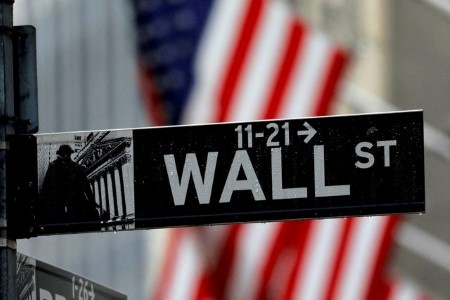




Philippines Trade Update: Trade trajectories trend along
 DOWNLOAD
DOWNLOAD

Policy Rate Updates: Double cut finale
 DOWNLOAD
DOWNLOAD

Monthly Economic Update: One for the road
 DOWNLOAD
DOWNLOAD


Lowered profit forecasts raise concerns on shaky Wall Street

NEW YORK, Sept 26 (Reuters) – Recent profit warnings from bellwether companies like Ford Motor Co, may signal more challenges ahead for corporate America, increasing wariness for investors as the stock market deepens its sell-off.
Investors are increasingly pricing in a US economic downturn next year. The US Federal Reserve raised interest rates by three-quarters of a percentage point for a third straight time on Wednesday in its fight to combat inflation, and some analysts think the aggressive hikes could tip the economy into recession.
With that, concern about earnings has been rising as companies face higher inflation and possibly weakening demand.
Ford Motor (F) warned last Monday that inflation-related supplier costs will run about USD 1 billion higher than expected in the current quarter, while FedEx Corp. (FDX) outlined on Thursday cost cuts of up to USD 2.7 billion after falling demand hammered first-quarter profits.
The announcements are “very important, especially if there is a spate of future warnings,” said Quincy Krosby, chief global strategist, LPL Financial in Charlotte, North Carolina.
“The market is most worried about demand slowing in the US and demand slowing globally,” she said.
Analysts have cut their S&P 500 earnings estimates for the third and fourth quarters, and for all of 2022.
For the third quarter, analysts expect overall S&P 500 earnings to have increased just 4.6% over the year-ago period, compared with growth of 11.1% expected at the start of July, while they see earnings for all of 2022 growing by 7.7% versus 9.5% seen on July 1, according to IBES data from Refinitiv as of Friday.
“Really up until maybe a month or two ago, we didn’t see much in the way of earnings downgrades. That is now changing, and it is playing catch-up,” said Paul Nolte, portfolio manager at Kingsview Investment Management in Chicago. “It is more fallout, and it is expected.”
Third-quarter results start coming by mid-October, marking one of the next big events for stock investors.
Upbeat corporate earnings had helped support the rebound in US stocks over the summer.
But the respite appears over, with the Dow Jones industrial average .DJI dropped below its June low to its lowest since November 2020 on Friday, narrowly missing a close more than 20% below its Jan. 4 record all-time closing peak of 36,799.64 points.
That would have confirmed a bear market that began from Jan. 4, according to a conventional definition. The Dow is the only one of the three major indexes not to have bear market status. The S&P 500 is down 23% for the year so far, while the Nasdaq is down 31%. Both are also within close reach of the bottoms reached in June.
Rick Meckler, partner at Cherry Lane Investments, a family investment office in New Vernon, New Jersey, said US companies have a tendency to surprise Wall Street with earnings that are stronger than expected.
“Companies have shown an ability to navigate these kinds of situations before,” he said. “There will be a surprise as to how well earnings can hold up.”
Companies are being hit with a wide range of issues right now. On top of inflation and rising rates, there is Russia’s invasion of Ukraine.
“For now, as an investor, you’re getting hit on every side,” Meckler said. Estimates for earnings “are being reduced at the same time that the multiple is being reduced, and that’s part of what’s causing such a big sell-off.”
The S&P 500’s forward 12-month price-to-earnings ratio is now at 16.3, down from 22 at the end of December and near its long-term average of about 16, according to Refinitiv data.
(Reporting by Caroline Valetkevitch; Editing by Alden Bentley and Nick Zieminski)
This article originally appeared on reuters.com





 By Reuters
By Reuters